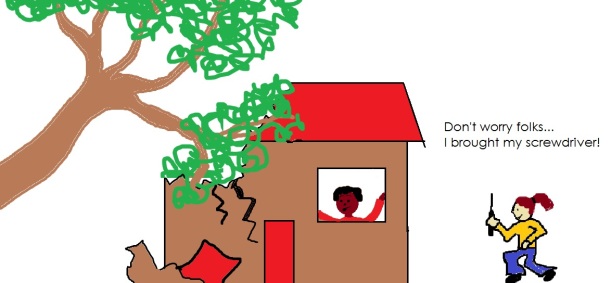Evidence-informed policy – it’s a wonderful thing. But just how widespread is it? The ‘Show your workings’ report from the Institute of Government (and collaborators Sense About Science and the Alliance for Useful Evidence) has asked this question and concluded… not very. It states “there [are] few obvious political penalties for failing to base decision on the best available evidence”. I have to say that as a civil servant this rings true. It’s not that people don’t use evidence – actually most civil servants, at least where I work, do. But there are not good systems in place to distinguish between people who have systematically looked at the full body of evidence and appraised its strengths and weaknesses – and those who have referenced a few cherry-picked studies to back up their argument.

Rosie is my actual cat’s name. And she does indeed make many poor life decisions. Incidentally, I named my other cat ‘Mouse’ and now that I am trying to teach my child to identify animals I am wondering just how wise a life decision that was…
The problem for those scrutinising decision making – parliament, audit bodies and, in the case of development, the Independent Commission for Aid Impact – is that if you are not a topic expert it can be quite hard to judge whether the picture of evidence presented in a policy document does represent an impartial assessment of the state of knowledge. The IoG authors realised this was a problem quite early in their quest – and came up with a rather nifty solution. Instead of trying to decide if decisions are based on an unbiased assessment of evidence, they simply looked at how transparent decision makers had been about how they had appraised evidence.
Now, on the evidence supply side there has been some great work to drive up transparency. In the medical field, Ben Goldacre is going all guns blazing after pharmaceutical companies to get them to clean up their act. In international development, registers of evaluations are appearing and healthy debates are emerging on the nature of pre-analysis plans. This is vitally important – if evaluators don’t declare what they are investigating and how, it is far too easy for them to not bother publishing findings which are inconvenient – or to try multiple types of analysis until, by chance, one gives them a more agreeable answer.
But as the report shows, and as others have argued elsewhere, there has been relatively little focus on transparency on the ‘demand’ side. And by overlooking this, I think that we might have been missing a trick. You see, it turns out that the extent to which a policy document explicitly sets out how evidence has been gathered and appraised is a rather good proxy for systematic evidence appraisal. And the IoG’s hypothesis is that if you could hold decision makers to account for their evidence transparency, you could go some way towards improving the systematic use of evidence to inform decision makers.
The report sets out a framework which can be used to assess evidence transparency. As usual, I have a couple of tweaks I would love to see. I think it would be great if the framework included more explicitly an assessment of the search strategy used to gather the initial body of evidence – and perhaps rewarded people for making use of existing rigorous synthesis products such as systematic reviews. But in general, I think it is a great tool and I really hope the IoG et al. are successful in persuading government departments – and crucially those who scrutinise them – to make use of it.


